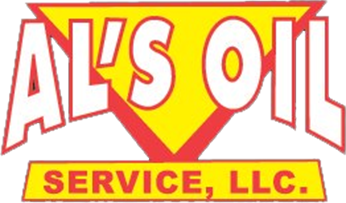Still Locally Owned & Serving Worcester County for Over 60 Years
AL'S Oil Service
Customer Resources
Free Estimates | Locally Owned for Over 60 Years | Same-Day Emergency Services
Free Estimates
Locally Owned for Over 60 Years
Same-Day Emergency Services
Hours:
Oil Assistance Programs
Fuel Assistance Programs
At AL'S Oil Service, we want our customers to have the ability to stay warm during the cold New England winters and we understand that many people may struggle with the cost of heating your home. To better serve our AL'S Oil Service family we proudly accept fuel assistance payments through various community programs.
If you are struggling, please contact these agencies as well as other local agencies and senior centers in your town to find out if you qualify for their program.
Worcester Community Action Council (WCAC)
(508) 754-1176
Southern Middlesex Opportunity Council (SMOC)
(508) 872-4853
Making Opportunity Count (MOC)
(978) 345-7040
Auburn Youth and Family Services (AYFS)
(508) 832-7677
Shrewsbury Youth and Family Services (SYFS, SOAR program)
(508) 845-6932
www.syfs-ma.org
For limited-income households that are ineligible for home energy assistance, please contact
The Good Neighbor Energy Fund (operated by Salvation Army)
1-800-334-3047
1. What is a Fill a Vent Pipe?
Your fill pipe is the pipe where the delivery driver connects the truck's hose to fill your oil tank. As the driver pumps the fuel into your tank the rising level of fuel in the tank begins to force the air out of the tank via the vent pipe. Your vent pipe has a whistle that is activated by the expulsion of air in the tank. As the air expels from the tank the vent whistle will get softer and stop. This indicates to the driver that the tank is full as there is no more air in the tank to be expelled. The driver stops pumping the fuel.
A properly working vent whistle is crucial to a safe delivery. You always want to be sure your vent and fill pipes are cleared from snow, ice, and debris. If your vent whistle is not in proper working order please contact the service department to have a technician out to clear and examine your vent.
2. Where is My Fill and Vent Pipe?
The fill pipe and vent pipe are typically located on the exterior wall need where your tank is located in the basement. For outside tanks, they will be located with the tank.
The fill pipe is usually the shorter of the two pipes, the vent is the taller.
A cap should always be on your fill and vent pipes to keep water and debris out.
3. Where is My Oil Tank?
Typically, your tank will be in the basement of your home, or somewhere on the home’s exterior near the wall—most often these are at the rear of the home, or occasionally along one of the sides. Oil tanks are quite large, usually holding anywhere from 220 gallons to 1,000, though the industry “standard” oil tank size is a 275-gallon basement-installed model.
4. How Do I Read an Oil Tank Gauge?
The vast majority of modern oil tanks have a gauge installed to make reading your oil level easier. The gauge will most likely be installed on the top of the tank. Normally, it will be a clear cylinder containing a float. Marked on the gauge will be these indicators:
- F
- ¾
- ½
- ¼
The indicators should be represented in the order above, and from here things are quite simple. If the oil tank gauge float is at the bottom of the gauge or not visible anymore, the oil tank is empty or close to empty. Do remember, though, that the oil gauge is telling you the level of fuel present in the tank. You can estimate the number of gallons in your tank by knowing how large the tank is. In an industry standard 275, for example, at ½ you would have roughly 135 gallons remaining.
5. How Can I Check if My Oil Tank Gauge is Working?
A properly working gauge is essential to understanding your oil usage. If you are not sure if your oil tank gauge is actually working there is a way to test if your oil tank gauge is operational. Gently tap on the exterior of the gauge covering and see if the float moves, it may just be stuck.
If that doesn’t work you can carefully remove the outer case and gently press the float down. If it comes right back up to its original position, the oil tank gauge is working properly. If the float does not go back into its original position, then it is not working and you need to contact the service department to have the oil tank serviced.
VISIT US
and surrounding area










Share On: